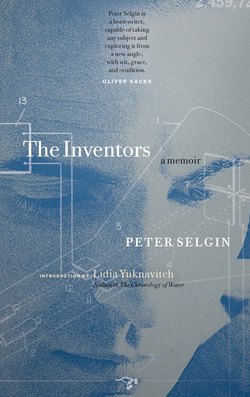Читать книгу The Inventors - Peter Selgin - Страница 16
На сайте Литреса книга снята с продажи.
ОглавлениеII.
Spuyten Duyvil, Bronx, New York, April, 2006
SIX YEARS LATER, YOU’RE SURFING THE WEB WHEN YOU stumble on the obituary:
UNIVERSITY PROFESSOR AND DIVERSITY ADVOCATE DIES
It’s two in the morning. You’re in your studio, the former master bedroom of the apartment you and your wife share in a section of the Bronx called Spuyten Duyvil. The name derives from the treacherous whirlpools generated by the confluence of the Hudson and Harlem Rivers, where many an aspirant swimmer and many more suicidal jumpers have met their dooms. Depending on what authority you appeal to, the pseudo-Dutch name means either “spitting devil,” “spouting devil,” “in spite of the devil,” or “spit on the devil.” On one side the view is framed by the Henry Hudson Bridge, on other the Palisades, with one of the oldest functioning swing bridges in the country – across which Amtrak trains thunder toward Penn Station – dividing them. On sunny afternoons the Palisades glow turquoise; the bridge is a monochromatic rainbow of blue steel. But it’s two a.m., and the bridge looms black against toll plaza lights.
Thanks to your insomnia, you and this view have gotten to know each other well. Over the top of your computer you gaze at it from time to time while traipsing through cyberspace, as you’re in the habit of doing whenever sleep forsakes you. You search for people you haven’t seen or heard from in decades, classmates and teachers you went to college or high school or even to first grade and kindergarten with.
And you search for him, your eighth-grade English teacher, the man who was your dearest friend, a hero and a mentor and even something of an idol to you, and who you hadn’t seen since the summer of 1980, when he more or less threw you out of his home.
The website on which the obituary appears is that of a local Oregon newspaper, the notice dated January 5, 2006. It describes the deceased’s accomplishments as a university professor, noting his achievements as a champion of human rights and diversity dedicated especially to the causes of indigenous peoples as well as refugees from Cambodia, Laos, and Vietnam. The notice explains how as a student the deceased did anthropological fieldwork in Thailand and Laos, how he worked briefly for the United Nations High Commissioner for Refugees, that he was fluent in French, Vietnamese, and Seneca, one of several languages spoken by the Iroquois tribes in what is now New York state. The notice ends with a quote from one of the teacher’s university associates, who relates the teacher’s conviction that “there would come a time when people of compassion would come together from all over the world to help make it a better place, a place where love, peace, and wisdom can survive and flourish.”
Castalia, you say to yourself. The unreachable star.
According to the obituary, your former teacher was born in Bridgeport, Connecticut, in 1943. There’s no mention of his having been a Rhodes Scholar or attending Oxford or Berkeley. Two survivors – a sister and a brother – are alluded to. Nothing about being adopted or having a paraplegic older brother. The cause of death isn’t specified.
The article also states that he was a “member of the Seneca Nation of Indians.” In the photograph that accompanies the article he wears a Navajo-patterned vest. A bone pendant dangles over the triangle of bare flesh exposed by his opened shirt collar. From the khaki baseball cap he wears a scruffy black ponytail protrudes. When you knew him the teacher was blond. His eyes were blue.
You spend the next hour scanning other websites, looking for what you’re not sure, until you find it – another obituary, that of the man the teacher had been living with when he more or less threw you out of his house. Like you, the man had been a former student. Like you, he had been nurtured and influenced by the teacher. Like you, he had been among a very few select people the teacher numbered among his friends.
This man’s obituary is dated February, 2006, less than one month after the teacher’s. At the request of the deceased’s family the cause of death isn’t disclosed.
YOU SHIFT YOUR gaze toward the window, to the unbroken string of red brake lights winking their way toward the toll plaza.
You recall the strange woman at your father’s memorial service.
You wonder: Can we ever really know anyone? Can we even know ourselves?
Who was my father? Who was the teacher? Who were these two men who were so responsible for making me who I am? Dear Past Self, do you know? Can you tell me?
